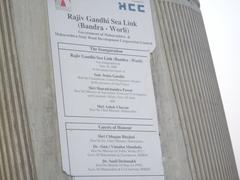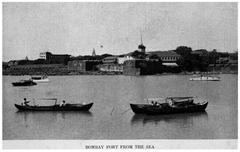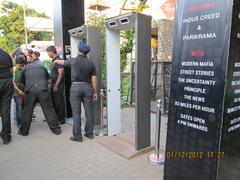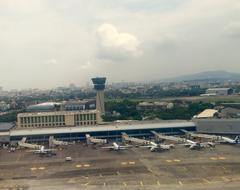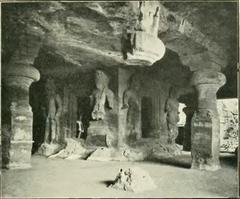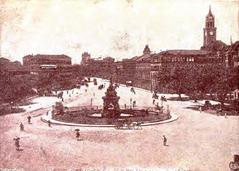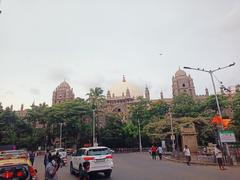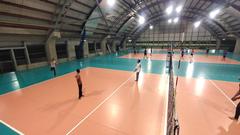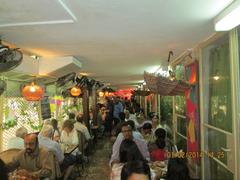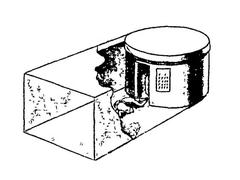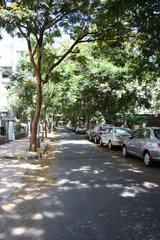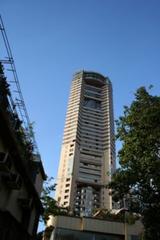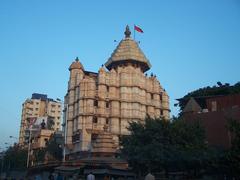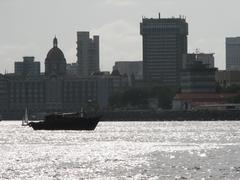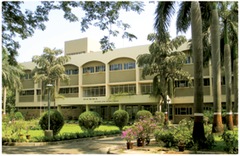
Comprehensive Guide to Visiting Mumbai, Maharashtra, India
Date: 14/08/2024
Captivating Introduction
Welcome to Mumbai, the pulsating heart of Maharashtra, India—a city so vibrant and diverse, it feels like stepping into a living, breathing kaleidoscope! Imagine a place where the aroma of spicy vada pav collides with the salty tang of the Arabian Sea, where skyscrapers pierce the sky alongside ancient temples, and where every street corner hums with the energy of millions of dreams and aspirations. Mumbai, often dubbed “The City of Dreams,” is a magical blend of the old and the new, where history and modernity dance together in an unending waltz.
Did you know that Mumbai’s name is derived from Mumbā, the local goddess believed to protect the city? Picture ancient settlements along the coastline, with a temple dedicated to Mumbā standing tall in the southeastern corner. During British rule, the city was known as Bombay, a name likely derived from the Portuguese term “Bom Baim,” meaning “Good Harbor.” In 1995, the city reclaimed its original name, Mumbai, and has never looked back (source).
From the colonial grandeur of the Gateway of India to the bustling bazaars of Colaba Causeway, Mumbai offers an endless array of experiences that will captivate your senses. Imagine starting your day with a sunrise at Marine Drive, then hopping on a ferry to the mystical Elephanta Caves, and ending the day with a Bollywood movie at a local theater. Whether you’re exploring the Victorian Gothic architecture of Chhatrapati Shivaji Maharaj Terminus or savoring street food at Mohammad Ali Road, Mumbai is a city that promises to sweep you off your feet and leave you yearning for more.
But Mumbai isn’t just about its iconic landmarks and bustling streets. It’s a city of contrasts, where opulent high-rises coexist with sprawling slums like Dharavi, a testament to the resilience and entrepreneurial spirit of its residents. It’s a city where festivals like Ganesh Chaturthi and Diwali transform the streets into a riot of colors and music, and where the monsoon rains bring a magical touch to the city’s landscape. Whether you’re a history buff, a foodie, an art lover, or an adventure seeker, Mumbai has something for everyone. So, are you ready to dive into the enchantment that is Mumbai? Let’s embark on this journey together!
Table of Contents
- History and Significance of Mumbai
- A City of Dreams and Contrasts
- Ancient Origins and Etymology
- Colonial Era and Development
- Post-Independence Growth
- Cultural Significance
- Architectural Landmarks
- Natural Beauty and Geography
- Economic Hub
- Challenges and Future Prospects
- A Feast for the Senses
- Local Lingo and Pop Culture
- Seasonal Highlights
- Myth Busting and Surprises
- Short Stories and Legends
- Sample Itineraries
- Fun Facts and FAQs
- Major Attractions
- Gateway of India
- Chhatrapati Shivaji Maharaj Terminus
- Marine Drive
- Elephanta Caves
- Chhatrapati Shivaji Maharaj Vastu Sangrahalaya
- Haji Ali Dargah
- Siddhivinayak Temple
- Sanjay Gandhi National Park
- Juhu Beach
- Bandra-Worli Sea Link
- Colaba Causeway
- Nehru Science Centre
- Mount Mary Church
- Global Vipassana Pagoda
- Taraporewala Aquarium
- Bhau Daji Lad Museum
- Versova Beach
- Kanheri Caves
- Mahalaxmi Temple
- Practical Tips for Visitors
- Cultural Festivals and Visitor Tips
History and Significance of Mumbai
A City of Dreams and Contrasts
Welcome to Mumbai, the city that never sleeps! Imagine a place where the scent of spicy street food mingles with the salty sea breeze, where the clamor of bustling markets meets the serene hum of ancient temples. Mumbai is a melting pot of dreams, ambition, and relentless energy. It’s a city that will sweep you off your feet and leave you yearning for more.
Ancient Origins and Etymology
Did you know that Mumbai’s name comes from Mumba, the local goddess believed to protect the city? Picture this: ancient settlements dotting the coastline, with a temple dedicated to Mumba standing proudly in the southeastern corner. During British rule, the city was called Bombay, a name that probably morphed from “Bom Baim,” meaning “Good Harbor” in Portuguese. But in 1995, the name Mumbai made its grand comeback, and the rest is history!
Colonial Era and Development
Imagine a cluster of seven islets transformed into a thriving port city—Mumbai’s journey began in the 17th century when the British East India Company took charge. Thanks to extensive reclamation projects, causeways, and breakwaters, these islets merged into what we now call Bombay Island. The British built a fort in today’s Fort district, forming the city’s commercial heart. Picture the hustle and bustle of traders, merchants, and ships converging in this key Arabian Sea port.
Post-Independence Growth
Post-1947, Mumbai became the beating heart of India’s cotton textile industry, diversifying into various manufacturing sectors, including a booming IT industry. Picture skyscrapers rising alongside historic buildings, with Mumbai’s financial institutions anchoring its status as India’s economic powerhouse. However, rapid growth brought challenges: air and water pollution, overcrowding, and substandard housing. The city’s island geography only adds to these woes, but Mumbai keeps marching forward.
Cultural Significance
Mumbai is like a kaleidoscope of cultures, languages, and religions. Ever visited the Haji Ali Dargah or the Mount Mary Church? These are just a couple of the city’s religious landmarks. Festivals like Ganesh Chaturthi transform Mumbai into a carnival of colors, music, and devotion. Picture millions joining processions, immersing Ganesha idols in the sea, and celebrating with unmatched fervor. Don’t miss the lesser-known Banganga Tank, where you can witness traditional rituals in a serene setting.
Architectural Landmarks
From the majestic Gateway of India to the Victorian Gothic marvel of Chhatrapati Shivaji Maharaj Terminus, Mumbai’s architecture is a journey through time. Imagine standing on the Bandra-Worli Sea Link, feeling the sea breeze, and marveling at this modern engineering feat. And don’t forget the hidden gems like the heritage village of Khotachiwadi, with its charming Portuguese-style houses.
Natural Beauty and Geography
Picture the Western Ghats’ lush greenery meeting the Arabian Sea’s endless blue. As you sail into Mumbai Harbor, the panorama of the Western Ghats and the harbor’s islands is simply breathtaking. Elephanta Island, with its ancient cave temples, offers a peaceful escape from the city’s hustle. And if you crave nature, head to Sanjay Gandhi National Park, where you can spot leopards and enjoy a boat ride on the serene lake.
Economic Hub
Mumbai is India’s financial nucleus, home to the Bombay Stock Exchange, Reserve Bank of India, and countless multinational corporations. Bollywood, the heart of India’s film industry, churns out hundreds of movies annually. Picture yourself on a Bollywood tour, visiting film sets, and maybe even catching a glimpse of a star! For a taste of local life, explore Dharavi, one of Asia’s largest slums, and witness the resilience and entrepreneurial spirit of its residents.
Challenges and Future Prospects
Despite its glamour, Mumbai grapples with overcrowding, traffic snarls, and inadequate housing. But fear not, urban development projects aim to tackle these issues. Imagine an expanded metro network whisking you across the city, new roads and bridges easing traffic, and affordable housing projects providing homes for all. Mumbai’s future is bright, with initiatives designed to enhance the quality of life for its residents.
A Feast for the Senses
In Mumbai, every corner teems with sensory delights. Picture the vibrant colors of street markets, the mouthwatering aroma of vada pav and pav bhaji, the honking of rickshaws, and the rhythmic clatter of local trains. Feel the soft sand of Juhu Beach under your feet and the cool sea breeze on your face. Mumbai is a sensory wonderland!
Local Lingo and Pop Culture
Wanna talk like a Mumbaikar? Try these phrases: “Kasa Kai?” (How are you?), “Aamchi Mumbai” (Our Mumbai), and “Jhakaas” (Awesome). Bollywood movies like “Slumdog Millionaire” and “Dharavi” capture Mumbai’s essence, while books like “Shantaram” offer gripping tales set in the city. Dive into Mumbai’s pop culture and feel like a local!
Seasonal Highlights
Mumbai’s charm varies with the seasons. The monsoon transforms the city into a lush, green paradise, with Marine Drive offering a magical view of rain-kissed waves. Winter brings pleasant weather, perfect for exploring the streets and savoring hot chai. Each season unveils a different facet of Mumbai’s personality.
Myth Busting and Surprises
Think Mumbai is all about Bollywood and traffic jams? Think again! Did you know the city has a thriving art scene, with galleries like the Jehangir Art Gallery showcasing contemporary works? Or that Mumbai’s dabbawalas, who deliver home-cooked meals, have a near-perfect accuracy rate? Mumbai is full of surprises waiting to be uncovered.
Short Stories and Legends
Mumbai’s history is rich with tales. Imagine the British fleeing from a tiger in the Fort area, leading to the construction of the famous Flora Fountain. Or the legend of Banganga Tank, where Lord Rama supposedly shot an arrow to bring forth water. These stories add a magical layer to the city’s vibrant tapestry.
Sample Itineraries
Ready for an adventure? Try this: Start your day with a sunrise at Marine Drive, followed by a visit to the Gateway of India. Explore the bustling Crawford Market and savor street food at Mohammad Ali Road. In the evening, catch a Bollywood movie at a local theater and end your day with a peaceful walk at Worli Sea Face. Customize your itinerary and discover Mumbai your way!
Fun Facts and FAQs
Ever wondered why Mumbai’s trains are so packed? Or which Bollywood star’s house you can visit? Check out our FAQs for quirky insights and practical tips. For instance, did you know that Mumbai’s local trains carry over 7.5 million passengers daily? Or that you can take a tour of Shah Rukh Khan’s iconic Mannat bungalow?
Major Attractions in Mumbai, Maharashtra, India
Gateway of India
The Gateway of India is one of Mumbai’s most iconic landmarks. Built in 1924, this grand archway was constructed to commemorate the visit of King George V and Queen Mary to India. Located on the waterfront in the Apollo Bunder area, it offers stunning views of the Arabian Sea. The structure is a blend of Hindu and Muslim architectural styles, symbolizing the unity of India. Visitors can enjoy boat rides from here to the Elephanta Caves and other nearby attractions.
Chhatrapati Shivaji Maharaj Terminus
A UNESCO World Heritage Site, the Chhatrapati Shivaji Maharaj Terminus (CSMT) is a historic railway station and a fine example of Victorian Gothic Revival architecture in India. Opened in 1887, it was originally named Victoria Terminus. The station is a bustling hub, serving millions of passengers daily. Its intricate design, featuring turrets, pointed arches, and stained glass windows, makes it a must-visit for architecture enthusiasts.
Marine Drive
Known as the “Queen’s Necklace” due to its glowing streetlights that resemble a string of pearls at night, Marine Drive is a 3.6-kilometer-long boulevard along the coast of South Mumbai. It stretches from Nariman Point to Girgaum Chowpatty Beach. This promenade is a popular spot for locals and tourists alike, offering breathtaking sunset views and a serene environment for evening walks.
Elephanta Caves
Located on Elephanta Island, about 10 kilometers from Mumbai, the Elephanta Caves are a network of sculpted caves dedicated to the Hindu god Shiva. These rock-cut temples date back to the 5th to 8th centuries and are a UNESCO World Heritage Site. The main cave features a magnificent 6-meter-high statue of Shiva in his three-headed form, known as Trimurti. Visitors can reach the island by ferry from the Gateway of India.
Chhatrapati Shivaji Maharaj Vastu Sangrahalaya
Formerly known as the Prince of Wales Museum, the Chhatrapati Shivaji Maharaj Vastu Sangrahalaya is one of Mumbai’s premier cultural institutions. Established in 1922, the museum houses an extensive collection of artifacts, including ancient sculptures, decorative arts, and rare manuscripts. The museum’s Indo-Saracenic architecture, with its domes and arches, is a visual treat.
Haji Ali Dargah
The Haji Ali Dargah is a revered mosque and tomb located on an islet off the coast of Worli. Built in 1431, it houses the tomb of Sayed Peer Haji Ali Shah Bukhari, a wealthy merchant who renounced his worldly possessions. The dargah is accessible via a narrow causeway that is submerged during high tide, adding to its mystical allure. It attracts thousands of devotees and tourists daily.
Siddhivinayak Temple
Dedicated to Lord Ganesha, the Siddhivinayak Temple is one of Mumbai’s most famous and visited temples. Built in 1801, the temple features a small mandap with the shrine for Siddhivinayak (“Ganesha who grants your wish”). The temple’s wooden doors are carved with images of the Ashtavinayak (the eight manifestations of Ganesha in Maharashtra). Devotees believe that a visit to this temple fulfills their wishes.
Sanjay Gandhi National Park
Spanning over 104 square kilometers, the Sanjay Gandhi National Park is a green oasis in the heart of Mumbai. The park is home to a variety of flora and fauna, including leopards, deer, and over 250 species of birds. One of the park’s main attractions is the Kanheri Caves, a complex of rock-cut Buddhist caves dating back to the 1st century BCE. Visitors can enjoy nature trails, boating, and a mini-train ride through the park.
Juhu Beach
Juhu Beach is one of Mumbai’s most popular beaches, known for its lively atmosphere and street food stalls. Located in the western suburbs, it is a favorite spot for locals to unwind and enjoy the sea breeze. The beach is also famous for its proximity to the residences of several Bollywood celebrities. Visitors can indulge in local delicacies like pav bhaji, bhel puri, and ice golas while enjoying the scenic views.
Bandra-Worli Sea Link
The Bandra-Worli Sea Link is an architectural marvel that connects the western suburbs of Bandra with Worli in South Mumbai. This cable-stayed bridge spans 5.6 kilometers over the Arabian Sea and significantly reduces travel time between the two points. The bridge offers stunning views of the Mumbai skyline and is especially beautiful when illuminated at night.
Colaba Causeway
A bustling street market, Colaba Causeway is a shopper’s paradise. Located in South Mumbai, it offers a wide range of goods, from clothes and accessories to antiques and souvenirs. The market is also home to several iconic eateries, including Leopold Cafe and Cafe Mondegar. Bargaining is a common practice here, and visitors can find unique items at reasonable prices.
Nehru Science Centre
The Nehru Science Centre is a popular attraction for science enthusiasts and families. Located in Worli, the center features interactive exhibits on various scientific principles and phenomena. It also houses a planetarium, where visitors can enjoy shows about astronomy and space exploration. The center aims to promote scientific temper and curiosity among visitors of all ages.
Mount Mary Church
The Mount Mary Church, also known as the Basilica of Our Lady of the Mount, is a Roman Catholic basilica located in Bandra. Built in 1904, the church is dedicated to the Virgin Mary and is a significant pilgrimage site. The annual Bandra Fair, held in September, attracts thousands of devotees and tourists. The church’s serene ambiance and stunning architecture make it a must-visit.
Global Vipassana Pagoda
The Global Vipassana Pagoda is a meditation hall and monument dedicated to the teachings of Buddha. Located near Gorai, it features the world’s largest stone dome built without supporting pillars. The pagoda serves as a center for Vipassana meditation and aims to promote peace and harmony. Visitors can learn about the life and teachings of Buddha and participate in meditation sessions.
Taraporewala Aquarium
The Taraporewala Aquarium is India’s oldest aquarium, located on Marine Drive. Established in 1951, it houses a variety of marine and freshwater species, including sharks, turtles, and colorful fish. The aquarium also features a touch pool where visitors can interact with some of the marine creatures. It is an educational and entertaining destination for families and children.
Bhau Daji Lad Museum
The Bhau Daji Lad Museum, formerly known as the Victoria and Albert Museum, is Mumbai’s oldest museum. Established in 1855, it showcases the city’s cultural heritage through a collection of artifacts, maps, and photographs. The museum’s neoclassical architecture and beautifully restored interiors make it a visual delight. Special exhibitions and events are regularly held here.
Versova Beach
Versova Beach is a quieter alternative to the more crowded Juhu Beach. Located in the suburb of Andheri, it is known for its clean sands and vibrant fishing community. The beach has gained attention for its massive cleanup drives led by local volunteers. Visitors can enjoy a peaceful stroll, watch the fishermen atwork, and savor fresh seafood at nearby eateries.
Kanheri Caves
Nestled within the Sanjay Gandhi National Park, the Kanheri Caves are a group of rock-cut Buddhist caves dating back to the 1st century BCE. The caves served as a center for Buddhist learning and meditation. They feature intricate carvings, stupas, and ancient inscriptions. The serene surroundings and historical significance make it a fascinating destination for history buffs and nature lovers.
Mahalaxmi Temple
The Mahalaxmi Temple is one of Mumbai’s most revered Hindu temples, dedicated to the goddess Mahalaxmi. Built in 1831, the temple is located on the Bhulabhai Desai Road. It attracts thousands of devotees, especially during the Navratri festival. The temple’s architecture and the view of the Arabian Sea from its premises add to its spiritual charm.
Practical Tips for Visitors
- Traffic: Mumbai’s traffic can be overwhelming, especially during peak hours (8-10 AM and 6-8 PM). Plan your travel accordingly to avoid delays.
- Weather: Mumbai has a tropical climate, so light, breathable clothing is recommended. Avoid visiting during the monsoon season (June to September) due to heavy rainfall and flooding.
- Transport: Use reliable cab services like Ola and Uber for convenient travel. Rickshaws are also a popular and affordable option for short distances.
- Safety: Be cautious in crowded areas and avoid taking selfies in designated “no selfie zones” to ensure your safety.
- Accommodation: Book your stay through trusted platforms like Oyo and Treebo for a comfortable experience.
By exploring these attractions and following these tips, visitors can have a memorable and enriching experience in Mumbai. Ready to uncover Mumbai’s secrets? Download Audiala now and let our expertly crafted audio guides lead you through the city’s hidden gems and fascinating stories!
Discover the Magic of Mumbai: Festivals, Tips, and Hidden Gems
Ganesh Chaturthi
Welcome to Mumbai, where every corner tells a story and every festival is a vibrant splash of color! Let’s start with Ganesh Chaturthi—an event so grand, it feels like the entire city is dancing. Imagine streets filled with lively processions, elaborate idols of Lord Ganesha, and cultural performances that keep you spellbound. Held in August or September, this ten-day celebration culminates in the immersion of Ganesha idols in the sea, attracting both locals and tourists (TravelTriangle).
Diwali
Next up is Diwali, the festival of lights. Picture Mumbai aglow with lamps, candles, and fireworks, creating a dazzling spectacle. Falling in October or November, Diwali is marked by family gatherings, sumptuous feasts, and the joyous exchange of gifts. The city’s streets and markets buzz with activity, making it an electrifying time to visit (IndianVisit).
Holi
Ah, Holi—the festival of colors! Imagine yourself in a city where the streets turn into a riot of colors as people joyfully throw vibrant powders and splash water. Held in March, Holi is accompanied by music, dance, and delectable traditional sweets. Prime spots for Holi celebrations include Marine Drive, Gorai Beach, and Kalamb Beach (TravelTriangle).
Elephanta Festival
For a touch of cultural elegance, the Elephanta Festival on the Elephanta Islands is a must-visit. Organized by the Maharashtra Tourism Development Corporation, this two-day festival in February features dance and music performances, talent shows, and rituals. The highlight? An illuminated idol of Shiva, casting a magical glow over the festivities (TravelTriangle).
Kala Ghoda Arts Festival
The Kala Ghoda Arts Festival is a nine-day cultural fiesta held in February. It celebrates Mumbai’s rich heritage through various forms of art, dance, music, and theatre. Visitors can shop, explore art galleries, and immerse themselves in performances. It’s a magnet for artists and art lovers worldwide (TravelTriangle).
Mumbai Film Festival
Calling all cinephiles! The Jio MAMI Mumbai Film Festival, held in March, is a prestigious event showcasing world cinema and indie films. It includes workshops, movie reunions, and screenings of international and Indian films. A paradise for film enthusiasts (TravelTriangle).
Oktoberfest Mumbai
Love food, liquor, and music? Oktoberfest Mumbai is your go-to event. This 16-day festival in October takes place at venues like BlueFrog, JW Cafe, and Hard Rock Cafe. It’s a fantastic cultural extravaganza for party lovers (TravelTriangle).
Banganga Festival
In January, the Banganga Festival at Malabar Hills is a musical paradise. Organized by the Maharashtra Tourism Development Corporation, this event features musical tributes to Lord Ram and other cultural performances. It’s a celebration aimed at preserving and promoting India’s rich heritage (TravelTriangle).
Visitor Tips for Mumbai
Best Time to Visit
The best time to visit Mumbai is during the winter months, from November to February, when the weather is pleasant and comfortable. Ideal for sightseeing and outdoor activities (Mumbai7).
Transportation
Getting around Mumbai is an adventure in itself! The Chhatrapati Shivaji Maharaj International Airport connects you by air, while local transport options include taxis, auto-rickshaws, buses, and the iconic Mumbai local trains. Brace yourself for the city’s notorious traffic, especially during peak hours (Mumbai7).
Accommodation
From luxury hotels to budget-friendly guesthouses, Mumbai has it all. Popular areas like Colaba, Bandra, and Juhu are close to major attractions and offer diverse dining and shopping options (MumbaiTourism).
Safety Tips
- Keep your belongings secure and be cautious of pickpockets.
- Avoid traveling alone late at night in unfamiliar areas.
- Use reputable taxi services like Ola and Uber.
- Stay hydrated and carry sunscreen, especially during the summer.
Local Etiquette
- Dress modestly, especially at religious sites.
- Remove your shoes before entering temples and some homes.
- Respect local customs and traditions.
- Bargain politely when shopping in local markets.
Must-Try Foods
Mumbai is a food lover’s paradise. Don’t miss:
- Vada Pav: Mumbai’s spicy potato burger.
- Pav Bhaji: Spicy vegetable mash with buttered bread rolls.
- Pani Puri: Hollow puris filled with spicy tamarind water, potatoes, and chickpeas.
- Bhel Puri: A savory snack made of puffed rice, vegetables, and tangy tamarind sauce.
- Bombay Sandwich: A street food delight filled with vegetables, chutney, and spices (IndianVisit).
Shopping
Mumbai is a shopper’s delight. Check out:
- Colaba Causeway: Street shopping heaven.
- Fashion Street: Trendy clothing and accessories at bargain prices.
- Crawford Market: Historic market for fresh produce, spices, and household items.
- Linking Road: Street stalls and branded stores (UseBounce).
By diving into Mumbai’s festivals and following these tips, you’ll unlock the city’s magic and charm. Ready for your Mumbai adventure? Download the Audiala app to make your trip even more memorable!
Call to Action
As our journey through Mumbai draws to a close, it’s clear that this city is far more than just a bustling metropolis; it’s a living tapestry woven from threads of history, culture, and unyielding spirit. From the ancient origins of its name to the contemporary marvels of its skyline, Mumbai offers an endless array of experiences that cater to every traveler’s whim. Whether you’re wandering through the serene corridors of the Haji Ali Dargah, marveling at the architectural splendor of the Chhatrapati Shivaji Maharaj Terminus, or savoring the spicy kick of a vada pav from a street vendor, Mumbai is a city that engages all your senses and leaves an indelible mark on your soul.
But beyond its iconic landmarks and vibrant festivals, Mumbai’s true essence lies in its people—the Mumbaikars—whose resilience and zest for life are the city’s heartbeat. It’s a place where dreams are both born and realized, where every street corner has a story, and where every festival is a feast for the senses. And while the city grapples with challenges like overcrowding and traffic snarls, its relentless spirit and ongoing development projects promise a brighter, more vibrant future.
So, whether you’re planning your first visit or your tenth, Mumbai will always have something new and exciting to offer. Ready to uncover the secrets and stories that make this city so extraordinary? Download the Audiala app now and let our expertly crafted audio guides lead you through Mumbai’s hidden gems and cultural treasures. Your Mumbai adventure awaits—come and experience the magic for yourself!
References
- Welcome to Mumbai, the city that never sleeps! (TravelTriangle)
- Picture Mumbai aglow with lamps, candles, and fireworks, creating a dazzling spectacle. (IndianVisit)
- Prime spots for Holi celebrations include Marine Drive, Gorai Beach, and Kalamb Beach. (TravelTriangle)
- The Elephanta Festival on the Elephanta Islands is a must-visit. (TravelTriangle)
- The Kala Ghoda Arts Festival is a nine-day cultural fiesta held in February. (TravelTriangle)
- The Jio MAMI Mumbai Film Festival, held in March, is a prestigious event showcasing world cinema and indie films. (TravelTriangle)
- Oktoberfest Mumbai is your go-to event. (TravelTriangle)
- The Banganga Festival at Malabar Hills is a musical paradise. (TravelTriangle)
- The best time to visit Mumbai is during the winter months, from November to February. (Mumbai7)
- From luxury hotels to budget-friendly guesthouses, Mumbai has it all. (MumbaiTourism)
- Mumbai is a food lover’s paradise. (IndianVisit)
- Mumbai is a shopper’s delight. (UseBounce)
